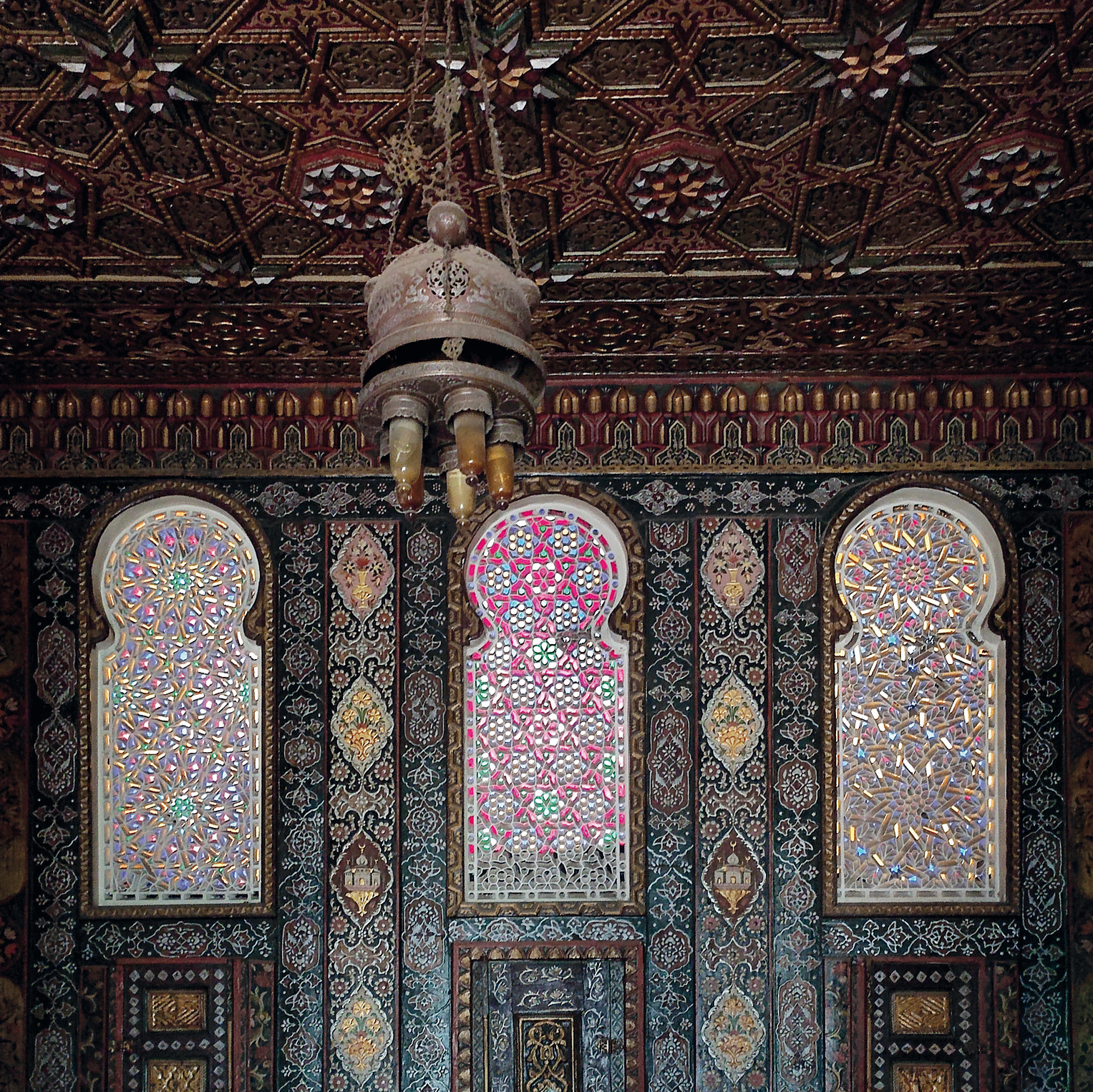
Caption: Cairo, Manial Palace © Vitrocentre Romont, Sophie Wolf
Check the program of the international conference here.
CONFERENCE
Interiors Reconfigured: Changing Materiality and Craftsmanship in the Decorative Arts
of the Middle East and North Africa, 18th–20th Centuries
Francine Giese, Sarah Keller, Vitrocentre Romont; Mercedes Volait, CNRS/InVisu
3-4.11.23, Vitrocentre Romont
We are pleased to announce the international conference dedicated to the decorative arts of the Middle East and North Africa with a special focus on material aspects and local practices. The 19th century witnessed an unprecedented disassembly of historical interiors in the cultural centers of the region, be it Cairo, Damascus or Istanbul. Dismounted architectural elements such as wood panels, ceilings, domes, marble incrustations, tiles, stucco glass windows or textiles reached the West via collectors or the art market, leaving behind a fragmented cultural heritage. This trend followed profound changes in the countries of origin since the 18th century, in the course of which local tastes and craftmanship began to mutate under Ottoman and Western influence.
The conference is jointly organized by the Vitrocentre Romont and the CNRS (InVisu research center in Paris), and will address the growing importance of material-based analysis in the field of Middle Eastern and Maghrebi décors. The starting point are the interiors of residences and palaces in the above-mentioned region, which have been extensively documented and described by Western architects, artists, and travelers. Some have undergone substantial restorations in recent times that have erased their most modern layers. Their exploration has so far often been limited to what they can tell about domestic architecture at the time of their building, or more recently with questions dealing with provenance, art market or cultural appropriation, without their original material composition being investigated by means of micro-analyses. When non-invasive analyses are possible, they may help to collect reliable data on the different components of a historical interior, with the aim of virtually reconstructing their furnishings and the changes undergone during their period of existence.
